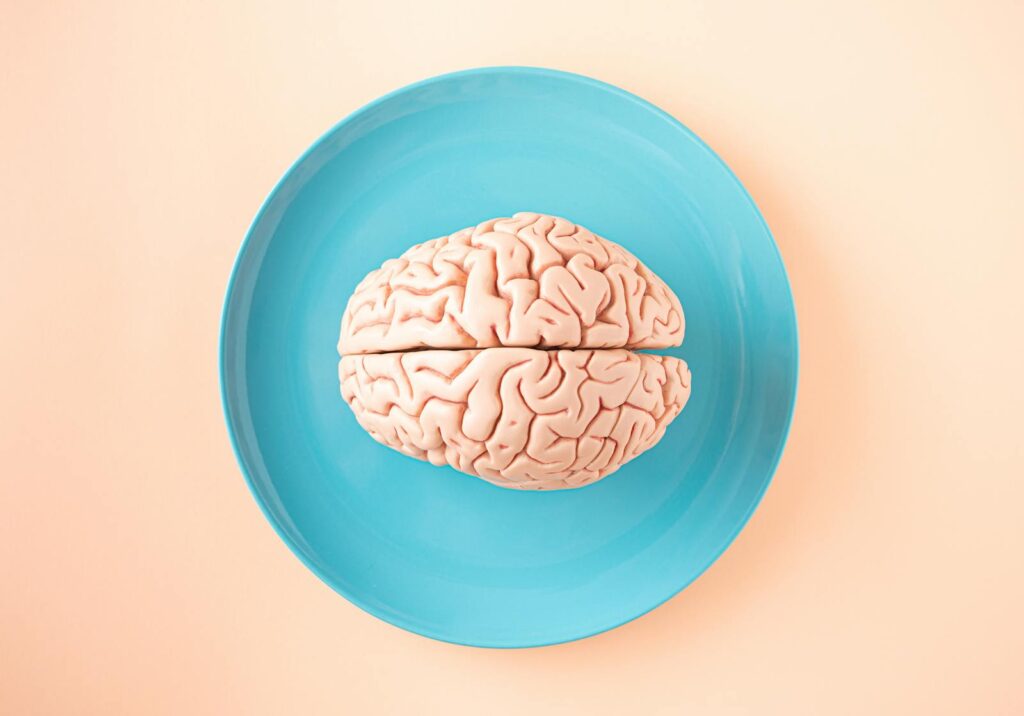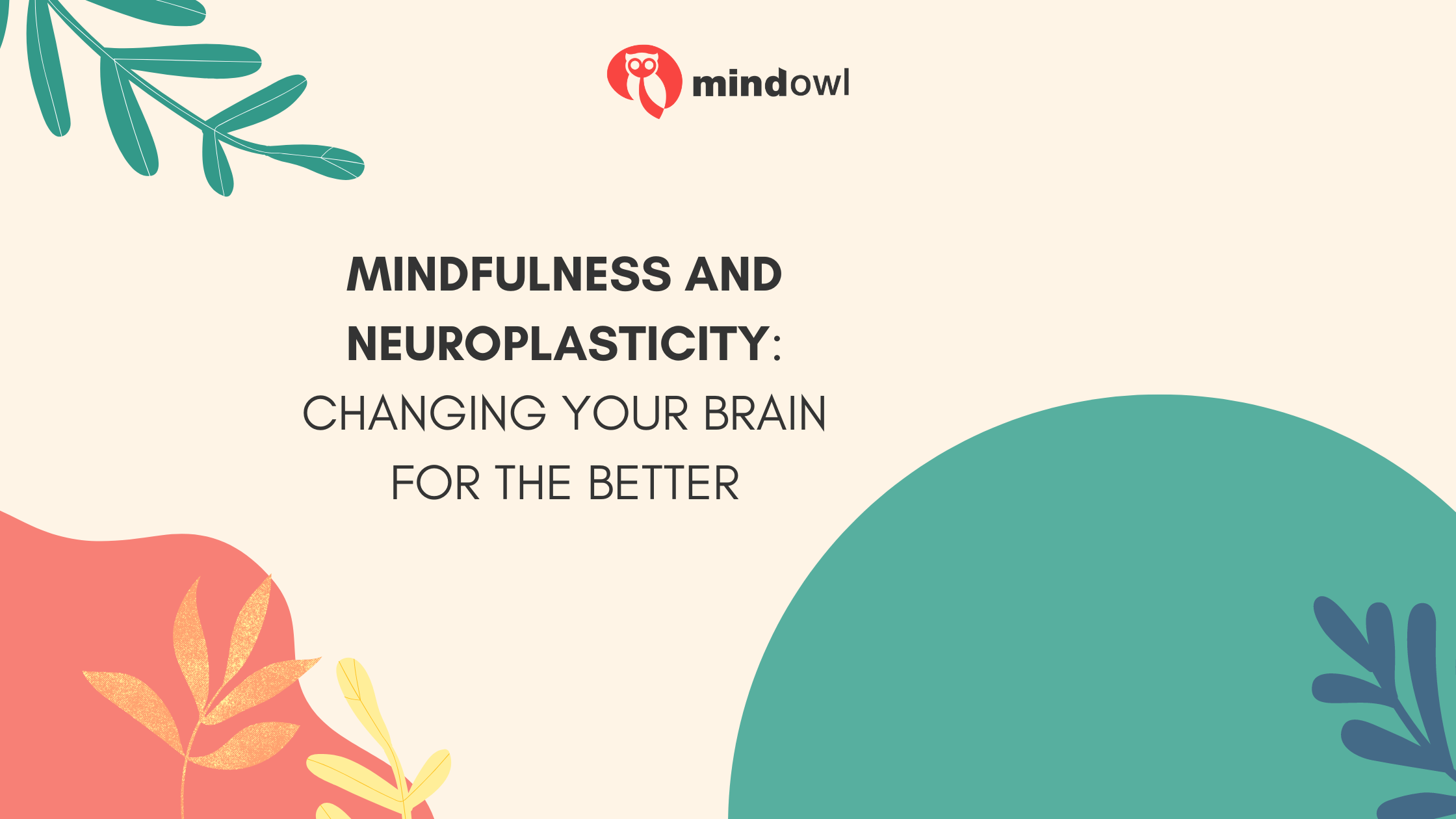Neuroplasticity is the brain’s amazing ability to change its structure and function based on how we use it. Mindfulness practices like meditation are powerful tools that can guide this process in a positive direction.
In our blog post, we’ll explore how mindfulness directly influences neuroplasticity, leading to real changes in the brain that benefit mental health and well-being.
Key Takeaways
- Your brain can change and grow at any age through a process called neuroplasticity.
- Mindfulness meditation helps improve focus, memory, mood, and how you handle stress by making structural changes in the brain.
- Regular mindfulness practice not only boosts self-awareness but also helps manage stress effectively.
- Studies have shown that long-term mindfulness practice leads to significant improvements in cognitive functions and emotional well-being.
- Anyone can begin reshaping their brain for the better with simple daily exercises that promote focus, reduce anxiety, and enhance learning capabilities.

Understanding Neuroplasticity
Neuroplasticity is the brain’s ability to change and grow as you learn and experience new things. This means your brain can actually rewire itself to handle different tasks or recover from injuries.
Every time you learn a skill, like playing the piano or speaking a second language, your brain forms new connections between cells. These changes show just how flexible our brains are.
Neuroplasticity gives us the power to shape our own minds.
This incredible process isn’t just for young people; adults can also make their brains stronger and smarter through practice and learning. It’s all about forming new pathways in your mind, proving you’re never too old to learn something new or improve yourself.
Role of Mindfulness in Neuroplasticity
Mindfulness plays a crucial role in neuroplasticity, contributing to enhanced focus and memory as well as regulating emotions and mood. Through mindfulness practice, the brain’s ability to rewire itself is harnessed, leading to structural and functional changes that promote positive cognitive and emotional responses.
Enhancing Focus and Memory
Practising mindfulness has been shown to improve working memory capacity. This is crucial for how we process information and respond to the world around us. Through regular meditation, people can train their brains to remain more present and less distracted.
This improves their ability to concentrate on tasks for longer periods without losing focus. Studies point out that neural mechanisms play a big part in these improvements related to attention. Simple daily exercises in mindfulness can lead to changes within the brain, especially in areas involved with paying attention and remembering details.
Over time, this training helps not just with academic or work-related tasks but also enhances overall cognitive functions, making it easier for individuals to recall information accurately and quickly.
Regulating Emotions and Mood
Mindfulness meditation helps people manage their feelings in new ways. It makes them see emotions differently, thanks to changes in the brain’s structure. This shift mainly happens in the prefrontal cortex.
This part of the brain gets better at controlling thoughts and calming negative feelings.
Mindful emotion regulation enhances cognitive control mechanisms and tones down bad moods.
Regular mindfulness practice can make you less prone to sadness or anxiety. It trains your brain to focus on the present and not dwell on past worries or future fears. Over time, this training builds a more resilient mind that can face stress without getting overwhelmed.

The Science Behind Mindfulness and Neuroplasticity
How Mindfulness Changes Brain Structures
Mindfulness meditation strengthens networks that help with focus, memory, and mood. This means our brains can change in good ways when we regularly practise mindfulness.
Studies show that just a bit of meditation each day can lead to more grey matter in the brain. Grey matter is important because it’s involved in processing information and controlling emotions.
Practising mindfulness also affects other key parts of the brain like the hippocampus, which plays a big role in memory and learning, and the amygdala, which deals with how we respond to stress.
Regular meditators often see changes not just in these areas but across their whole brain, making everything from remembering where you left your keys to handling a bad day that much easier.
The great thing about this is anyone can do it – you don’t need any special tools or training to start reshaping your brain for the better through mindfulness.
Impact on Hippocampal Functional Topology
Practising mindfulness leads to changes in the way certain areas of our brain connect. Specifically, it affects the hippocampus, a part crucial for memory and learning. Research shows that meditation helps this part of the brain become better at its job.
It strengthens connections making it easier for us to learn new things and remember them.
Meditation not only boosts the health of our hippocampus but also fights against its aging process. This means regular meditators might keep their memories sharp and maintain better cognitive functions as they grow older compared to those who don’t meditate.
Studies using neuroimaging technology confirm these positive changes, revealing how powerful mindfulness can be in enhancing our brain’s resilience against age-related declines.
Practical Applications of Mindfulness and Neuroplasticity
Managing Stress
Regular meditation practice strengthens neural pathways that control how we react to stressful events.
Practising mindfulness means becoming more aware of the present moment. This can sharply reduce how stressed we feel daily. It trains our brains to stay calm and collected even when things get tough.
Boosting Self-awareness
Through meditation, individuals learn to pay closer attention to their inner selves. This practice helps people notice their own patterns of thought and feeling with greater clarity. A mindfulness practice leads to a better understanding and management of emotions and reactions.
They can tell the difference between different kinds of internal experiences more easily.
This not only enhances self-knowledge but also improves how we interact with others around us, making us more empathetic and aware of their perspectives too.
The Long-term Effects of Mindfulness on the Brain
Long-term mindfulness practice changes brain structures, such as the hippocampus and amygdala, which play a crucial role in memory and emotional regulation. Mindfulness meditation induces structural plasticity in grey matter, boosting overall brain health and cognitive function.
Additionally, mindfulness training enhances metacognitive awareness while decreasing rumination, promoting better emotional well-being.
Furthermore, research has linked mindfulness meditation with changes in the brain that contribute to improved mental health. Long-term mindfulness practice can rewire our brains for the better by promoting neuroplasticity and enhancing cognitive function—ultimately shaping how we think and help us live happier lives.
Conclusion
In conclusion, mindfulness and neuroplasticity go hand in hand, allowing us to reshape our brains for the better. Through focused awareness and meditation practices, we can enhance our memory, manage stress, and regulate emotions effectively.
The evidence from neuroscience shows how these practices physically change brain structures over time. By embracing mindfulness and neuroplasticity, we unlock the potential for long-term positive effects on our mental well-being.
FAQs
1. What is neuroplasticity, and how does it relate to mindfulness?
Neuroplasticity is the brain’s amazing ability to change and adapt in response to our experiences, thoughts, and actions. Mindfulness practices like meditation can harness this power, leading to positive changes in brain regions involved with stress, memory, and well-being.
2. Can practising meditation really change my brain?
Yes! Studies using brain imaging have shown that long-term meditation can lead to structural changes in the brain—increasing grey matter in areas associated with focused attention, reducing stress levels, and enhancing memory.
3. How does mindfulness training affect how we handle stress?
Mindfulness training helps us develop a more effective response to stress. By changing the way our brains react to stressful situations through meditation, we can reduce feelings associated with fear and live a happier life.
4. Is all types of meditation beneficial for neuroplasticity?
While several types of meditation—like vipassana (insight), kindness (metta), or mindfulness-based stress reduction—are beneficial; they may impact different brain areas involved in various aspects of emotional regulation and attention control differently. The key is consistent practice.
5. Do I need years of meditation practice to see benefits on my brain?
Not necessarily! Even short-term meditation training has been shown to produce noticeable effects on the brain’s electrical activity and working memory capacity—affective experience included!
6. Why do scientists believe mindfulness has protective effects against cognitive decline?
Research suggests that regular engagement in meditative practices plays an important role in maintaining cognitive functions as we age by promoting new neural connections—anatomical correlates of long-term mediation—and possibly even fostering new neurons which help keep our brains sharp.
MindOwl Founder – My own struggles in life have led me to this path of understanding the human condition. I graduated with a bachelor’s degree in philosophy before completing a master’s degree in psychology at Regent’s University London. I then completed a postgraduate diploma in philosophical counselling before being trained in ACT (Acceptance and commitment therapy).
I’ve spent the last eight years studying the encounter of meditative practices with modern psychology.

